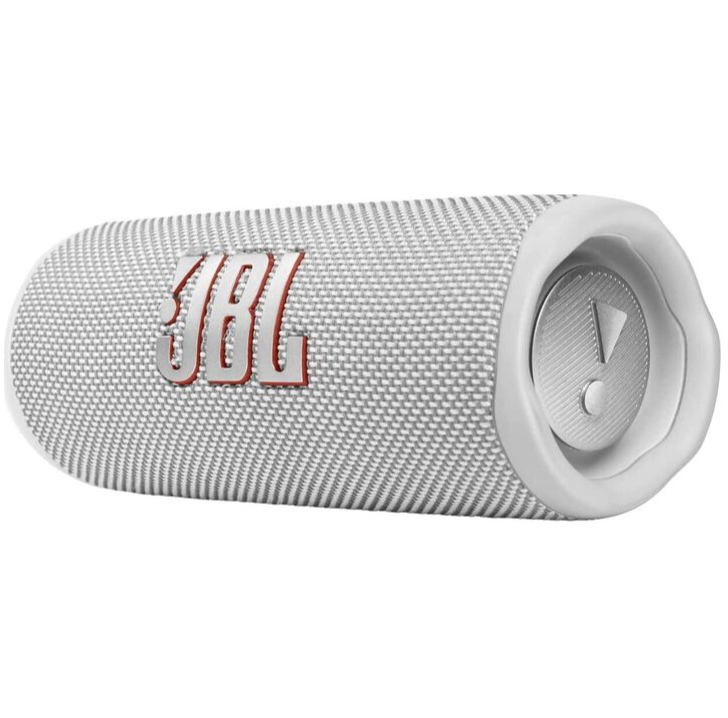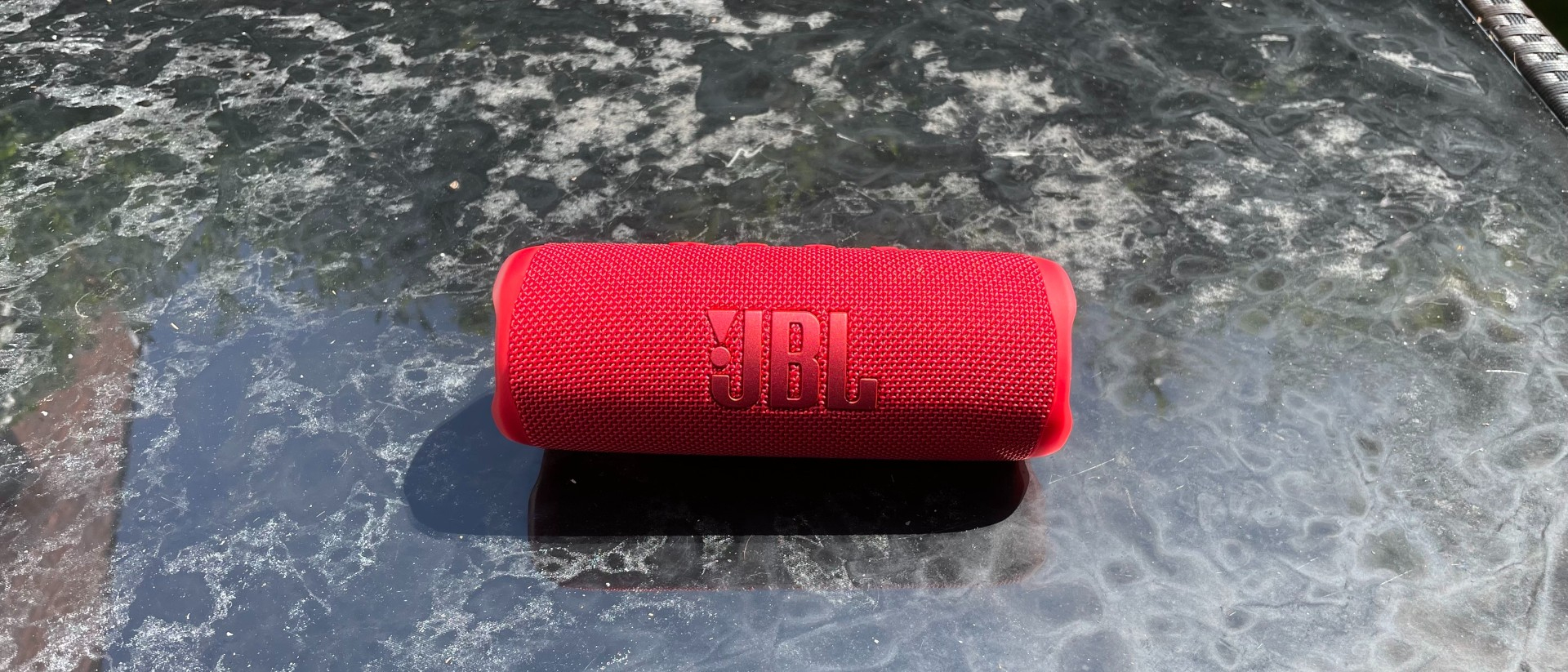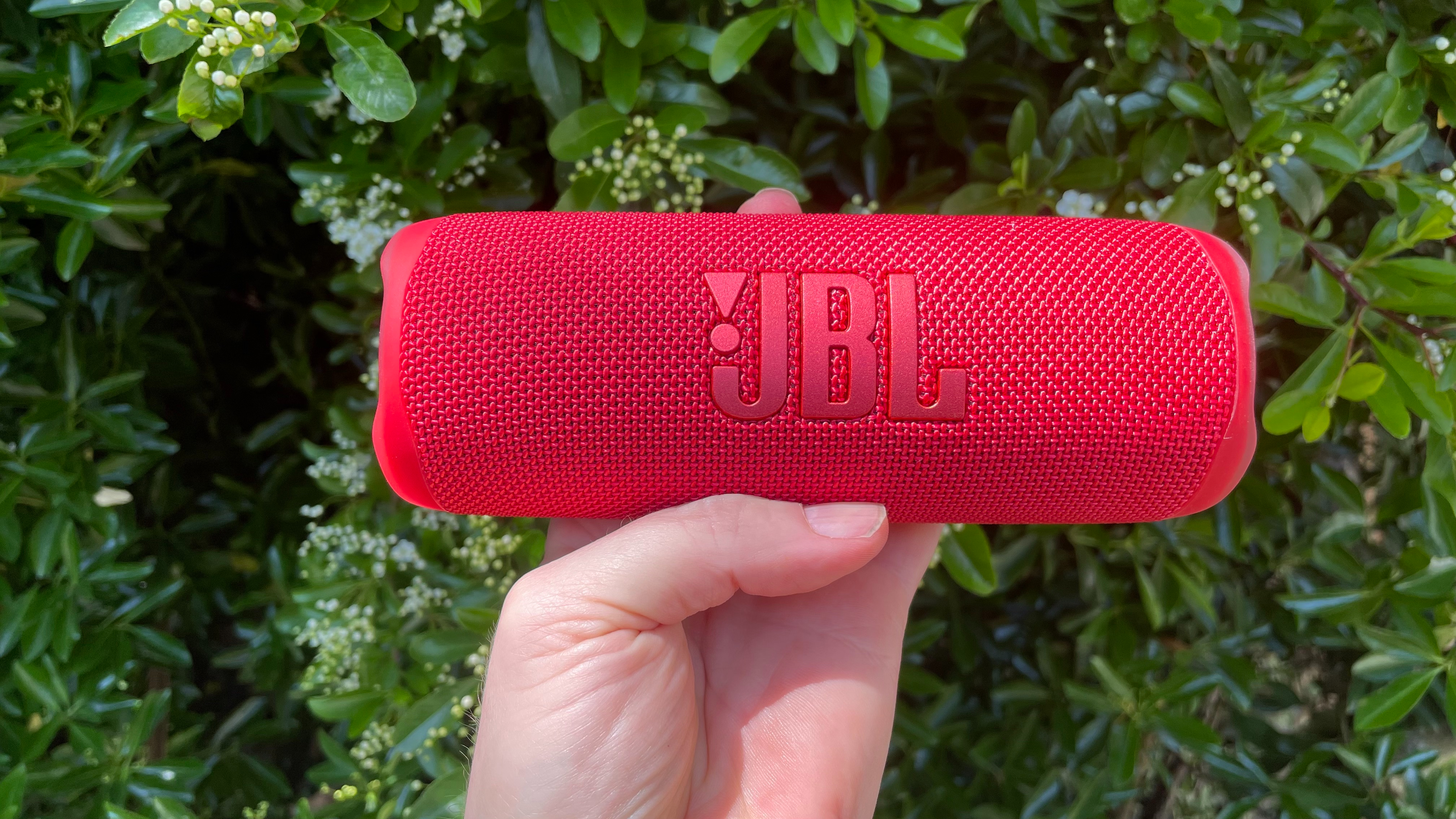JBL Flip 6 vs Flip 5: which Bluetooth speaker is better?
Two five-star speakers, but which should you buy?

Bluetooth: 4.2
Features: IPX7 rating, PartyBoost speaker pairing, 12-hour battery life
Dimensions (hwd): 7.4 x 18.1 x 6.9cm
Weight: 540g
The Flip 5 might not be around for too much longer, so you should consider nabbing one while you can. While it's getting long in the tooth, the five-star portable remains a fond favourite due to its superb sound and portable, hardwearing build. With prices dropping and stocks running low, it's still one of the best-value speakers around.
For
- Solid bass and timing
- Great sense of acoustics
- PartyBoost stereo pairing
Against
- No aux-in or microphone
- Not Connect+ compatible
- Basic app

Bluetooth: 5.1
Features: IP67 rating, PartyBoost speaker pairing, 20-hour battery life
Dimensions: 17.8 x 6.8 x 7.2cm
Weight: 550g
Unlike The Matrix: Revolutions or Jaws 2, the follow-up to the Flip 5 is a worthwhile sequel that manages to build on its predecessor's legacy without losing what made the line so special in the first place. With improved sound, better features and a slightly sleeker design, it earns its five-star plaudits and the right to carry on the JBL Flip name.
For
- Improved clarity and sonic precision
- Punchy bass for size
- Useful equaliser feature
Against
- More critical of recording and source quality
- Tough competition from Award-winning JBL Charge 5
When it comes to Bluetooth speakers, JBL is still the king of the hill. Even with competition from Tribit, Sony and Ultimate Ears in recent years, the American brand is at the top of the pile across its range of excellent speakers, producing chunky devices that can juice up your phone (see the Award-winning Charge 5) to bulky, rugged units built to survive the elements (enter the Xtreme 3). The slim, lightweight Flip range fits in just above the very cheapest Bluetooth speakers in JBL's portfolio, but these little performers are no slouches. Power them up and you'll see why we rate them so highly here at What Hi-Fi?.
Portable and easy to slip into a bag or coat pocket, either Flip model here is ideal for taking on adventures, to the beach, on holiday, or just popping on the table during a back garden meetup. Both speakers are at the affordable end of the market, too, and although they might forego extras like a microphone and speakerphone functionality, JBL's Flip line has still provided consistent quality over the years.
Both the latest model in the family, the Flip 6 and its predecessor, the Flip 5 have earned five stars in our reviews, with the Flip 6 offering improved performance and features, while the Flip 5's price drops make it appealing for bargain hunters.
So which should you buy? Let's look at the differences and find out which is right for you.
JBL Flip 6 vs Flip 5: price

The JBL Flip 5 is obviously the older of the two speakers, and launched at £100 / $100 / AU$139 way back in 2019. Thanks to its advancing years and diminishing stocks, it can now be picked up for as little as £70 in the UK, although getting hold of a first-hand model is getting trickier by the week.
The newer Flip 6 launched in early 2022 but has already been discounted from its launch price of £130 / $130 / AU$200. Shop around and you can find it under £100 in the UK and under $100 in the US, although these prices vary massively and with startling regularity. Either way, the Flip 6 isn't likely to drop below the Flip 5, so it's the latter taking the win here for pure affordability.
** Winner: JBL Flip 5 **
JBL Flip 6 vs Flip 5: design

Both devices are built to withstand the elements, hence they have rubberised sections to protect them from knocks and slipping. But unlike some outdoorsy speakers, they're still pretty slim and stylish at the same time.
The Flip 5 is IPX7-rated waterproof to a depth of one metre for up to 30 minutes. The Flip 6 matches that, but adds dustproofing with its IP67 rating, though neither has a cover for its USB-C charging port. The Flip 5 is designed to be laid lengthways or stood on its end, but do the latter and it doesn't stay perfectly upright because of its odd-shaped ends. JBL fixed this with the Flip 6, thanks to the addition of a small rubber foot.
Visually, the two speakers are very similar. They share the same ruggedised rubber accents, though the Flip 6 tones this down a bit. The Flip 6 has the same button layout as the Flip 5, but they're mounted on a slightly smaller rubber panel that no longer spans the entire length of the speaker.
The Flip 6's wrist strap is now a continuous loop of cord rather than two strands fastened with a fancy knot, and it features a useful slider for better security around your wrist. As well as some new colourways, JBL has also gone for a bigger metallic branding this time, but it is still a refined choice and completes a functional yet good-looking build.
The JBL Flip 6 takes it, especially if you get it in the handsome red colourway of our review sample.
** Winner: JBL Flip 6 **
JBL Flip 6 vs Flip 5: features

It's what's on the inside that counts, right? Well the JBL Flip 6 has been upgraded inside as well as out, and the improvements are far from arbitrary.
The Flip 6 keeps the same 44mm racetrack-shaped driver as the Flip 5, driven by the same 20W of amplification, but now has a separate tweeter powered by a dedicated 10W amplifier. This does add some weight, but not much – the Flip 6 only weighs 10g more than its predecessor. The Flip 6 also retains the Flip 5's 4800mAh battery, with the same 12-hour runtime and recharging time of 2.5 hours.
Both devices are compatible with the JBL Connect app, which adds some functionality and control to proceedings. The app itself is pretty simple, and now lets you alter the treble, mid and bass response in the equaliser, as well as link multiple speakers via PartyBoost.
Press the PartyBoost button on either speaker and you can pair it with another compatible JBL unit to play in stereo, but be warned: anything older than the Flip 5 isn't compatible, so don't expect your Flip 4 to join in the fun. Also, you can't pair a Flip 5 and Flip 6 to play in stereo, as both participants have to be the same model. You can, however, use this feature to link over 100 speakers in mono, and here they don't have to be the same model. Imagine the noise.
The Flip 6 boasts Bluetooth 5.1 (the older Flip 5 has Bluetooth 4.2), and so can support two devices at once. That means you can play tunes wirelessly from a different device without having to unpair your main one and re-pair the other every time. It's essentially the same as the multipoint tech found in newer pairs of headphones.
There are some omissions, though. Neither can double as a hands-free device for calls, nor can they take a cable via an aux-in for wired listening. They also lack support for voice-activated personal assistants like Siri, Google Assistant and Alexa. That's a shame for both, although we rather like the simplicity of the Flip models. But the newer Flip 6 is, as you'd expect, more in keeping with the times than the slightly outdated older model, so is the clear choice here.
** Winner: JBL Flip 6 **
JBL Flip 6 vs Flip 5: sound quality

When we reviewed it, the Flip 5 was one of the best-sounding Bluetooth speakers to pass through our testing labs, hence why it picked up a 2020 What Hi-Fi? Award. But does the Flip 6 sound even better?
It has its work cut out. The Flip 5 has a rock-solid wireless connection that never dropped out during our extensive testing. The speaker puts in an impressively weighty performance without becoming too bassy. It doesn't just relay the music it's given, but layers and celebrates it with a real sense of openness.
The Flip 5 offers masterful sonic delivery in a trimmed-down package, especially in the lower registers. As we stated in our review: "for such a diminutive unit, it’s an impressively weighty performance through the bass". When offered up Fontaines D.C.'s post-punk anthem Big, we really got a sense of "all the musical strands (being) held completely in check". That's not easy when you're a small speaker dealing with a tough genre of music.
The Flip 6 takes things a step further, though. It packs plenty of oomph and energy across the frequencies, with a snappier and more full-bodied low end than its predecessor. When listening to Prince's Adore, we said in our original review that "as Prince unleashes his vocal stylings, the Flip 6 delivers a cleaner and more emotive performance overall, sounding more spacious and open than its predecessor but without losing cohesive timing across the frequencies."
All in all, the JBL Flip 6 is the better listen. But beware – it's not as forgiving as the JBL Flip 5, and will expose the harshness of any sub-par recordings more, especially with the high frequencies. Make sure your source material is up to scratch, and you'll find plenty to enjoy with the Flip 6.
** Winner: JBL Flip 6 **
JBL Flip 6 vs Flip 5: verdict

From an objective standpoint, the JBL Flip 6 is the clear winner here. It sounds better and is more versatile thanks to EQ tweaking within the app. It's not much pricier, either, and adds dust-proofing and Bluetooth 5.1 to its skillset.
The one downside (if we can call it that) is that its sonic profile is actually very clear, so it tends to expose any imperfections within the source material. This is just worth bearing in mind if you're dealing with sub-par music files and cruddy recordings.
On the other side of things, the Flip 5 is still a great buy. Dependable, fun sounding, and now more affordable than ever, it's a good option if your budget won't stretch to the excellent Flip 6.
MORE:
What we want from the upcoming JBL Flip 7
Our pick of the best Bluetooth speakers for every budget
Want a bigger, better sound? Read our JBL Charge 5 review
Sonos Roam 2 vs Roam 1: what are the differences?
These are the best wireless speakers you can buy
Get the What Hi-Fi? Newsletter
The latest hi-fi, home cinema and tech news, reviews, buying advice and deals, direct to your inbox.

Harry McKerrell is a senior staff writer at What Hi-Fi?. During his time at the publication, he has written countless news stories alongside features, advice and reviews of products ranging from floorstanding speakers and music streamers to over-ear headphones, wireless earbuds and portable DACs. He has covered launches from hi-fi and consumer tech brands, and major industry events including IFA, High End Munich and, of course, the Bristol Hi-Fi Show. When not at work he can be found playing hockey, practising the piano or trying to pet strangers' dogs.